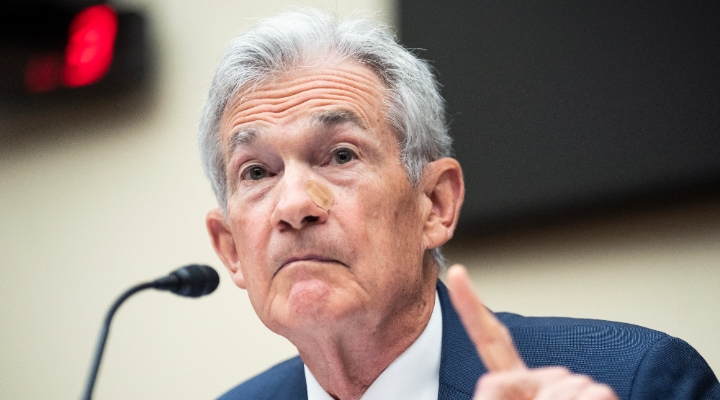Christine Benz: Hi, I'm Christine Benz from Morningstar.com. How can investors build a solid foundation for their portfolios? Joining me via Skype to discuss that topic is Alex Bryan, he's director of passive research strategies for Morningstar in North America.
Alex, thank you so much for being here.
Alex Bryan: Thank you for having me.
Benz: You dedicated the most recent issue of Morningstar ETFInvestor to the topic of building a strong foundation for investor's portfolios, and you emphasized the importance of asset allocation--deciding what is an appropriate stock, bond, cash mix for you given your life stage. You say that investors spend a lot more time on security selection but ultimately asset allocation is more impactful. How do you know that? What does the research say about that topic?
Bryan: That's a great question. Imagine you had a portfolio that was allocated 40% to U.S. stocks, 20% to international stocks, and 40% to bonds. If you had perfect foresight and could somehow identify the managers that would have gone on to land in the top 5% of their respective Morningstar categories in each of those areas, you would have had a return of about 7.6% over the last 15 years through November. Now if you had instead decided to build that allocation with broad market-cap-weighted indexes your return would have been about 6.8%. So achieving that type of success with manager selection is very difficult, and as you can see from that example the return benefit is relatively modest.
But if I had instead decided to shift the asset allocation from 60% in stocks to 90% in stocks, the return on the portfolio would have climbed from 6.8% to 8%. So shifting the asset allocation has a much bigger impact on your overall portfolio's risk and its returns. That makes sense because stocks and bonds performed quite differently, so how much you decide to allocate to each bucket's going to have a much bigger impact on your overall performance than manager selection within each of those categories.
Benz: I know that's it's one thing that investors really struggle with--this idea of finding an appropriate asset allocation. I hear from a lot of investors that it seems quite black boxy to them. Do you have any thoughts on what factors investors should home in on, when they are trying to think about setting their asset allocation what should they prioritize?
Bryan: I think while we talk about a lot about returns, and that certainly draws our attention, I think more than anything else it's really important to allow your ability and willingness to take risk really dictate what type of asset allocation you have. It's important not to take more risk than you are comfortable with because if you do that you might experience losses that you are not prepared to handle. It can make it more difficult to stay invested through the markets rough patches, which will inevitably happen over time.
Benz: How do investors take their own personal situations and customize that to arrive at some sort of an appropriate asset allocation plan?
Bryan: One of the first things you should do to figure out how much risk you should take is identify the time period for which you have your investment. If I don’t need the money for a long period of time, I can afford to take greater risk with my money, because the risk of losing money actually goes down the longer your investment horizon is. Stocks have a better shot of earning a positive return the longer that you hold them. If I have a really big objective that I need to meet--let's say I am making down payment on a house in the next year or so--I probably shouldn’t allocate a lot of my money to stocks, but there's a good shot I could lose money over a short window of time. The longer your investment horizon the more risk you can take. So it's important to keep that in mind.
It's also important to understand your own willingness to take risk. If you are not comfortable with the prospect of losing money, it's probably not a good idea to allocate a big part of your portfolio to stocks. You need to have a balanced allocation that lets you sleep at night and something that you can stick with over the long term.
Benz: Assuming someone has taken those steps and identified an appropriate asset allocation mix, the next step is to populate that portfolio with some good core building blocks. Are there any categories that you would suggest investors focus on, any investment types that you would suggest that they tend to favor at the expense of others?
Bryan: The most important thing to keep in mind for identifying core investments--these are funds that should be broadly diversified, that should be very low cost, and they should be holdings that you can stick with regardless of what's happening in the market. The types of Morningstar categories that you might look for a core holding in would be the Morningstar large-blend category. This is typically going to be your broadest bucket of stocks; it includes large-cap stocks across the value-growth-style spectrum. You'd also want to look for your exposure to international stocks within the Morningstar foreign large-blend category. Then as far as bonds go it's good to look within the intermediate-term bond category which focuses on U.S. investment grade bonds.
Typically within each of those categories I would want to look for funds that are broadly diversified and funds that are among the lowest cost options within each of those categories. Because over time these are one of the best predicators of fund performance--the less you pay the better your odds are of achieving better returns.
Benz: What you've just talked about, I think, naturally would lead investors to favor perhaps some core-type passively managed funds. Can you talk about some of your favorite funds within each of those categories?
Bryan: As you mentioned these broad index funds are a good starting point; certainly not the only type of fund that would be suitable as its core holding. But I think if you are looking for a good place to start, one of the better options is the Vanguard Total Stock Market ETF, the ticker is VTI. This fund basically owns all U.S. stocks, and then it weights them based on their relative market capitalization. Effectively what this is doing is it's owning the market portfolio, harnessing all investors' collective wisdom, and it's delivering that exposure at a very, very low fee. That low fee allows investors to keep more of their money. This one has a good shot of outperforming relative to its actively managed peers because it charges considerably less. It's also a very tax-efficient option, low turnover, it hasn't made any capital gains distributions over its life. I think this is a really good core option for exposure to U.S. stocks.
If you are looking for exposure to international stocks, the Vanguard Total International Stock ETF, ticker VXUS, is a really great option. It again owns most stocks listed outside the U.S., both foreign developed and emerging-markets stocks and then weights them according to their market capitalization. This is also a very low cost fund that has been very tax efficient. I think it's a good complement to that U.S. stock fund.
Then as for fixed-income exposure, Vanguard Total Bond Market ETF, ticker BND, is a really good option. This fund basically provides broad exposure to the U.S. investment-grade bond market. So it owns Treasuries, corporate bonds, mortgage-backed securities, and it weights each of those bonds according to its market value. It does tend to tilt pretty heavily toward pretty conservative U.S. Treasuries and agency mortgage-backed securities. But that actually makes this a pretty good complement to stocks because those more highly rated conservative bonds tend to provide good downside protection. So in periods when the stock market is selling off this can provide a nice counterbalance to stocks and serve as the defense within your portfolio.
I think between these three funds--the Vanguard Total Stock Market Fund for U.S. stocks; Vanguard Total International Fund; and the Vanguard Total Bond Market ETF--I think these can help you build a really solid core portfolio that you could stick with through thick and thin.
Benz: Great recommendations, Alex. Thank you so much for being here.
Bryan: Thank you for having me.
Benz: Thanks for watching I'm Christine Benz from Morningstar.com.









:quality(80)/cloudfront-us-east-1.images.arcpublishing.com/morningstar/VUWQI723Q5E43P5QRTRHGLJ7TI.png)











